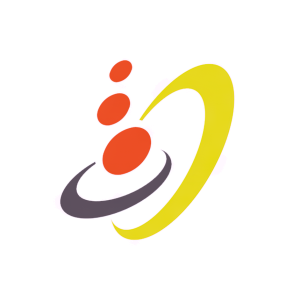Karyopharm Reports First Quarter 2025 Financial Results and Announces New Data in Myelofibrosis that Further Suggests Selinexor May Lead to Meaningful Spleen Volume Reduction, Symptom Improvement, Hemoglobin Stabilization and Disease Modification
Rhea-AI Summary
Positive
- Phase 3 SENTRY trial passed futility analysis and is 80% enrolled
- New Phase 2 data showed 67% of patients achieved ≥25% spleen volume reduction in myelofibrosis
- XPOVIO demand increased 5% compared to Q1 2024
- Royalty revenue increased 57% to $1.7M year-over-year
- Company reaffirmed full-year 2025 revenue guidance of $140-155M
Negative
- U.S. XPOVIO revenue declined to $21.1M from $26.0M due to $5.0M increase in product return reserve
- Net loss of $23.5M in Q1 2025
- Cash position decreased to $70.3M from $109.1M in previous quarter
- Company needs to explore alternatives to extend cash runway beyond early Q4 2025
- Interest expense increased to $11.0M from $5.9M year-over-year
Insights
Positive myelofibrosis data strengthens selinexor's potential despite Q1 revenue challenges and near-term cash runway concerns.
The new Phase 2 monotherapy data from Karyopharm's XPORT-MF-035 trial represents a significant clinical development in myelofibrosis treatment. In a hard-to-treat, heavily pretreated patient population, selinexor demonstrated impressive activity across all four hallmarks of myelofibrosis: spleen volume reduction, symptom improvement, hemoglobin stabilization, and disease modification.
The most compelling efficacy signals include 67% of selinexor-treated patients achieving ≥25% spleen volume reduction versus 38% in the physician's choice arm, and 33% achieving the more stringent ≥35% threshold compared to just 13% with standard care. Particularly noteworthy is selinexor's impact on hemoglobin levels, showing stabilization and reduced transfusion requirements - addressing a critical unmet need in myelofibrosis management.
The observed reductions in key inflammatory cytokines (IL-6, IL-8, TNFa, hepcidin) suggest selinexor may be affecting the underlying disease biology, not just symptoms. This evidence of disease modification is especially valuable since current JAK inhibitors primarily offer symptomatic relief without altering disease progression.
Safety data appears manageable with no treatment discontinuations in the selinexor arm despite expected class-effect toxicities like weight loss, asthenia, and nausea. The successful futility analysis and 80% enrollment in the Phase 3 SENTRY trial further validates selinexor's potential in first-line myelofibrosis in combination with ruxolitinib.
These positive findings in monotherapy suggest the combination approach in JAK-inhibitor naïve patients could potentially deliver superior outcomes with additive or synergistic effects, potentially establishing a new standard of care if Phase 3 results confirm these signals.
Mixed quarterly results with promising pipeline potential, but concerning short-term cash runway requires urgent attention.
Karyopharm's Q1 2025 financial results reveal a complex picture with both challenges and opportunities. Total revenue reached
The company's royalty revenue showed strength, increasing
Operating expenses were relatively controlled with R&D at
The concerning financial metric is Karyopharm's cash position, which declined to
While management reaffirmed 2025 guidance (
– New Randomized Phase 2 Monotherapy Data from XPORT-MF-035 Trial in a Hard-to-Treat Patient Population Further Strengthens Conviction in Selinexor's Potential in Combination with Ruxolitinib in JAKi-Naïve Myelofibrosis in Ongoing Phase 3 SENTRY Trial –
– Phase 3 SENTRY Trial Passed Planned Futility Analysis; Trial is Approximately
– Demand for XPOVIO® (selinexor) Increased
– Reaffirms Full-Year 2025 Total Revenue Guidance of
– Company is Exploring Various Alternatives to Extend Cash Runway –
– Conference Call Scheduled for Today at 4:30 p.m. ET –
"We are pleased that our Phase 3 SENTRY trial in patients with JAKi-naïve myelofibrosis has passed its pre-specified futility analysis and continues as planned without modifications. Our conviction in this trial is further strengthened by our new data in hard-to-treat myelofibrosis patients where we observed spleen volume reduction, symptom improvement, hemoglobin stabilization and evidence of disease modification with selinexor monotherapy, addressing all four hallmarks of the disease," said Richard Paulson, President and Chief Executive Officer of Karyopharm. "The outcomes that we have observed from our multiple pre-clinical and clinical trials continue to suggest that selinexor may be additive, if not synergistic, when combined with ruxolitinib in JAKi-naïve myelofibrosis patients. This combination holds the potential to be a much needed, new standard of care for patients with myelofibrosis."
First Quarter 2025 Highlights
XPOVIO Commercial Performance
- Demand for XPOVIO increased
5% in the first quarter of 2025 compared to the first quarter of 2024, with demand growth in both the community and academic settings. U.S. net product revenue was$21.1 million $26.0 million $5.0 million U.S. Food and Drug Administration of XPOVIO® 100 mg in combination with bortezomib and dexamethasone. The majority of XPOVIO® that is prescribed today are 40 mg and 60 mg doses, and the Company expects product returns will revert to historical levels in future quarters.- Expanded global patient access for selinexor is translating into growth in royalty revenue from Menarini, Antengene and other international partners. Royalty revenue increased
57% to$1.7 million
Research and Development (R&D) Highlights
Myelofibrosis
- The Phase 3 SENTRY trial (XPORT-MF-034; NCT04562389) continues as planned without any modifications following a pre-specified futility analysis conducted by the independent Data Safety and Monitoring Board. The trial is now approximately
80% enrolled. SENTRY is evaluating 60 mg once-weekly selinexor in combination with ruxolitinib compared to ruxolitinib plus placebo and is targeting 350 patients for enrollment. - Data from the XPORT-MF-035 (NCT04562870) Phase 2, randomized, open-label trial of selinexor versus physician's-choice (PC) in hard-to-treat patients with heavily pretreated myelofibrosis indicated signs of single-agent clinical activity with selinexor, including spleen volume reduction, hemoglobin stabilization, symptom improvement and evidence of disease modification. Patients were randomized 1:1 to either selinexor monotherapy or PC. Selinexor was administered at 80 mg weekly for the first two cycles and then decreased to 60 mg weekly from cycle 3 onwards. An optional crossover was available for PC treated patients if they met predefined spleen progression criteria. In total, 12 patients were randomized to the selinexor arm and 12 patients to the PC arm; 6 patients crossed over from PC to selinexor. Inclusive of crossover, spleen volume reduction of
25% or more (SVR25) at anytime was achieved in 8/12 (67% ) efficacy evaluable selinexor treated patients versus 3/8 (38% ) efficacy evaluable patients treated with PC. Spleen volume reduction of35% or more (SVR35) at anytime was observed in 4/12 (33% ) efficacy evaluable patients treated with selinexor versus 1/8 (13% ) efficacy evaluable patients treated with PC. Patients treated with selinexor had higher mean hemoglobin levels throughout the study duration and lower rates of red blood cell transfusions than those treated with PC. In addition, data on key cytokines that are relevant to myelofibrosis pathogenesis, symptom development, and anemia including IL-6, IL-8, TNFa, and hepcidin, demonstrated greater reductions at week 4 compared to baseline in patients treated with selinexor than patients treated with PC. Most common (≥25% overall) treatment emergent adverse events (TEAEs) in the randomized arms were decreased weight (selinexor:50% ; PC:50% ), anemia (25% ;58% ), asthenia (42% ;25% ), nausea (33% ;25% ), thrombocytopenia (33% ;25% ) and upper respiratory tract infection (25% ;33% ). Most common (≥15% in any arm) Grade 3+ TEAEs were anemia (17% ;58% ), cardiac failure (0% ;17% ), decreased appetite (17% ;0% ) and nausea (17% ;8% ). No treatment discontinuations due to TEAEs were observed in the selinexor arm. In 2023, Karyopharm decided to stop enrollment at 24 patients in this trial to focus resources on the Phase 3 SENTRY trial. - The Company continues to enroll patients into the 60 mg cohort of the Phase 2 SENTRY-2 trial of selinexor monotherapy in JAKi-naïve patients with moderate thrombocytopenia (XPORT-MF-044; NCT05980806).
Endometrial Cancer
- Enrollment continues in the Phase 3 XPORT-EC-042 (NCT05611931) trial evaluating selinexor as a maintenance-only therapy following systemic therapy versus placebo in patients with TP53 wild-type advanced or recurrent endometrial cancer. The Company expects to report top-line data from this event-driven trial in mid-2026.
Multiple Myeloma
- Enrollment of approximately 120 patients in the Phase 3 XPORT-MM-031 trial (EMN29; NCT05028348) was completed in the fourth quarter of 2024. The trial is being conducted in collaboration with the European Myeloma Network and is evaluating the all-oral combination of selinexor 40 mg, pomalidomide and dexamethasone (SPd40) in patients with previously treated multiple myeloma who received an anti-CD38 in their immediate prior line of therapy. The Company expects to report top-line data from this event-driven trial in the first half of 2026.
Anticipated Catalysts and Operational Objectives in 2025
Myelofibrosis
- Announce completion of target enrollment (N=350) of the Phase 3 SENTRY trial evaluating selinexor in combination with ruxolitinib in JAKi-naive myelofibrosis patients in June/July 2025.
- Report preliminary data on a subset of participants in the 60 mg cohort from the Phase 2 SENTRY-2 trial evaluating selinexor as a monotherapy in patients with JAKi-naïve myelofibrosis with moderate thrombocytopenia in 1H 2025.
- Report top-line results from the Phase 3 SENTRY trial in late 2025/early 2026.
Multiple Myeloma
- Maintain the Company's commercial foundation in the increasingly competitive multiple myeloma marketplace and drive increased XPOVIO revenues.
- Continue global launches and regulatory and reimbursement approvals for selinexor by partners in ex-
U.S. territories. - Continue to follow patients that are enrolled in the Phase 3 XPORT-MM-031 (EMN29) trial.
Endometrial Cancer
- Continue to enroll patients into the Phase 3 XPORT-EC-042 trial of selinexor as a maintenance monotherapy for patients with TP53 wild-type advanced or recurrent endometrial cancer.
2025 Financial Outlook
Based on its current operating plans, Karyopharm expects the following for full year 2025:
- Total revenue to be in the range of
$140 million $155 million U.S. XPOVIO net product revenue and license, royalty and milestone revenue earned from partners. U.S. XPOVIO net product revenue to be in the range of$115 million $130 million - R&D and selling, general and administrative (SG&A) expenses to be in the range of
$240 million $255 million $20 million - The Company expects that its existing cash, cash equivalents and investments, and the revenue it expects to generate from XPOVIO net product sales, as well as revenue generated from its license agreements, will fund its planned operations into early first quarter of 2026.1
1Excluding re-payment of
First Quarter 2025 Financial Results
Please note: All share amounts and per share amounts in this press release have been adjusted to reflect a 1-for-15 reverse split of our common stock, which we effected on February 25, 2025.
Total revenue: Total revenue for the first quarter of 2025 was
Net product revenue: Net product revenue for the first quarter of 2025 was
License and other revenue: License and other revenue for the first quarter of 2025 was
Cost of sales: Cost of sales for the first quarter of 2025 was
R&D expenses: R&D expenses for the first quarter of 2025 were
SG&A expenses: SG&A expenses for the first quarter of 2025 were
Interest income: Interest income for the first quarter of 2025 was
Interest expense: Interest expense for the first quarter of 2025 was
Other income: Other income for the first quarter of 2025 was
Net loss: Karyopharm reported a net loss of
Cash position: Cash, cash equivalents, restricted cash and investments as of March 31, 2025 totaled
Conference Call Information
Karyopharm will host a conference call today, May 12, 2025, at 4:30 p.m. Eastern Time, to discuss the first quarter 2025 financial results, the financial outlook for 2025 and to provide other business updates. To access the conference call, please dial (800) 836-8184 (local) or (646) 357-8785 (international) at least 10 minutes prior to the start time and ask to be joined into the Karyopharm Therapeutics call. A live audio webcast of the call, along with accompanying slides, will be available under "Events & Presentations" in the Investor section of the Company's website. An archived webcast will be available on the Company's website approximately two hours after the event.
About XPOVIO® (selinexor)
XPOVIO is a first-in-class, oral exportin 1 (XPO1) inhibitor and the first of Karyopharm's Selective Inhibitor of Nuclear Export (SINE) compounds for the treatment of cancer. XPOVIO functions by selectively binding to and inhibiting the nuclear export protein XPO1. XPOVIO is approved in the
For more information about Karyopharm's products or clinical trials, please contact the Medical Information department at: Tel: +1 (888) 209-9326; Email: medicalinformation@karyopharm.com
XPOVIO® (selinexor) is a prescription medicine approved:
- In combination with bortezomib and dexamethasone for the treatment of adult patients with multiple myeloma who have received at least one prior therapy (XVd).
- In combination with dexamethasone for the treatment of adult patients with relapsed or refractory multiple myeloma who have received at least four prior therapies and whose disease is refractory to at least two proteasome inhibitors, at least two immunomodulatory agents, and an anti‐CD38 monoclonal antibody (Xd).
- For the treatment of adult patients with relapsed or refractory diffuse large B‐cell lymphoma (DLBCL), not otherwise specified, including DLBCL arising from follicular lymphoma, after at least two lines of systemic therapy. This indication is approved under accelerated approval based on response rate. Continued approval for this indication may be contingent upon verification and description of clinical benefit in confirmatory trial(s).
SELECT IMPORTANT SAFETY INFORMATION
Warnings and Precautions
- Thrombocytopenia: Monitor platelet counts throughout treatment. Manage with dose interruption and/or reduction and supportive care.
- Neutropenia: Monitor neutrophil counts throughout treatment. Manage with dose interruption and/or reduction and granulocyte colony‐stimulating factors.
- Gastrointestinal Toxicity: Nausea, vomiting, diarrhea, anorexia, and weight loss may occur. Provide antiemetic prophylaxis. Manage with dose interruption and/or reduction, antiemetics, and supportive care.
- Hyponatremia: Monitor serum sodium levels throughout treatment. Correct for concurrent hyperglycemia and high serum paraprotein levels. Manage with dose interruption, reduction, or discontinuation, and supportive care.
- Serious Infection: Monitor for infection and treat promptly.
- Neurological Toxicity: Advise patients to refrain from driving and engaging in hazardous occupations or activities until neurological toxicity resolves. Optimize hydration status and concomitant medications to avoid dizziness or mental status changes.
- Embryo‐Fetal Toxicity: Can cause fetal harm. Advise females of reproductive potential and males with a female partner of reproductive potential, of the potential risk to a fetus and use of effective contraception.
- Cataract: Cataracts may develop or progress. Treatment of cataracts usually requires surgical removal of the cataract.
Adverse Reactions
- The most common adverse reactions (≥
20% ) in patients with multiple myeloma who receive XVd are fatigue, nausea, decreased appetite, diarrhea, peripheral neuropathy, upper respiratory tract infection, decreased weight, cataract and vomiting. Grade 3‐4 laboratory abnormalities (≥10% ) are thrombocytopenia, lymphopenia, hypophosphatemia, anemia, hyponatremia and neutropenia. In theBOSTON trial, fatal adverse reactions occurred in6% of patients within 30 days of last treatment. Serious adverse reactions occurred in52% of patients. Treatment discontinuation rate due to adverse reactions was19% . - The most common adverse reactions (≥
20% ) in patients with multiple myeloma who receive Xd are thrombocytopenia, fatigue, nausea, anemia, decreased appetite, decreased weight, diarrhea, vomiting, hyponatremia, neutropenia, leukopenia, constipation, dyspnea and upper respiratory tract infection. In the STORM trial, fatal adverse reactions occurred in9% of patients. Serious adverse reactions occurred in58% of patients. Treatment discontinuation rate due to adverse reactions was27% . - The most common adverse reactions (incidence ≥
20% ) in patients with DLBCL, excluding laboratory abnormalities, are fatigue, nausea, diarrhea, appetite decrease, weight decrease, constipation, vomiting, and pyrexia. Grade 3‐4 laboratory abnormalities (≥15% ) are thrombocytopenia, lymphopenia, neutropenia, anemia, and hyponatremia. In the SADAL trial, fatal adverse reactions occurred in3.7% of patients within 30 days, and5% of patients within 60 days of last treatment; the most frequent fatal adverse reactions was infection (4.5% of patients). Serious adverse reactions occurred in46% of patients; the most frequent serious adverse reaction was infection (21% of patients). Discontinuation due to adverse reactions occurred in17% of patients.
Use In Specific Populations
Lactation: Advise not to breastfeed.
For additional product information, including full prescribing information, please visit www.XPOVIO.com.
To report SUSPECTED ADVERSE REACTIONS, contact Karyopharm Therapeutics Inc. at 1‐888‐209‐9326 or FDA at 1‐800‐FDA‐1088 or www.fda.gov/medwatch.
About Karyopharm Therapeutics
Karyopharm Therapeutics Inc. (Nasdaq: KPTI) is a commercial-stage pharmaceutical company whose dedication to pioneering novel cancer therapies is fueled by a belief in the extraordinary strength and courage of patients with cancer. Since its founding, Karyopharm has been an industry leader in oral compounds that address nuclear export dysregulation, a fundamental mechanism of oncogenesis. Karyopharm's lead compound and first-in-class, oral exportin 1 (XPO1) inhibitor, XPOVIO® (selinexor), is approved in the
Forward-Looking Statements
This press release contains forward-looking statements within the meaning of The Private Securities Litigation Reform Act of 1995. Such forward-looking statements include those regarding Karyopharm's guidance on its 2025 total revenue, 2025 U.S. net product revenue and 2025 R&D and SG&A expenses; expected cash runway; expectations with respect to commercialization efforts; the ability of selinexor to treat patients with multiple myeloma, endometrial cancer, myelofibrosis, diffuse large B-cell lymphoma and other diseases; and expectations with respect to the clinical development plans and potential regulatory submissions of selinexor. Such statements are subject to numerous important factors, risks and uncertainties, many of which are beyond Karyopharm's control, that may cause actual events or results to differ materially from Karyopharm's current expectations. For example, there can be no guarantee that Karyopharm will successfully commercialize XPOVIO or that any of Karyopharm's drug candidates, including selinexor, will successfully complete necessary clinical development phases or that development of any of Karyopharm's drug candidates will continue. Further, there can be no guarantee that any positive developments in the development or commercialization of Karyopharm's drug candidate portfolio will result in stock price appreciation. Management's expectations and, therefore, any forward-looking statements in this press release could also be affected by risks and uncertainties relating to a number of other factors, including the following: the adoption of XPOVIO in the commercial marketplace, the timing and costs involved in commercializing XPOVIO or any of Karyopharm's drug candidates that receive regulatory approval; the ability to obtain and retain regulatory approval of XPOVIO or any of Karyopharm's drug candidates that receive regulatory approval; Karyopharm's results of clinical trials and preclinical trials, including subsequent analysis of existing data and new data received from ongoing and future trials; the content and timing of decisions made by the
XPOVIO® and NEXPOVIO® are registered trademarks of Karyopharm Therapeutics Inc.
KARYOPHARM THERAPEUTICS INC. CONDENSED CONSOLIDATED STATEMENTS OF OPERATIONS (unaudited) (in thousands, except per share amounts) | |||||||
Three Months Ended | |||||||
2025 | 2024 | ||||||
Revenues: | |||||||
Product revenue, net | $ | 21,054 | $ | 26,006 | |||
License and other revenue | 8,961 | 7,120 | |||||
Total revenue | 30,015 | 33,126 | |||||
Operating expenses: | |||||||
Cost of sales | 1,301 | 1,911 | |||||
Research and development | 34,618 | 35,425 | |||||
Selling, general and administrative | 27,352 | 29,549 | |||||
Total operating expenses | 63,271 | 66,885 | |||||
Loss from operations | (33,256) | (33,759) | |||||
Other income (expense): | |||||||
Interest income | 1,000 | 2,156 | |||||
Interest expense | (10,994) | (5,884) | |||||
Other income, net | 19,824 | 196 | |||||
Total other income (expense), net | 9,830 | (3,532) | |||||
Loss before income taxes | (23,426) | (37,291) | |||||
Income tax provision | (36) | (71) | |||||
Net loss | $ | (23,462) | $ | (37,362) | |||
Basic and diluted net loss per share | $ | (2.77) | $ | (4.85) | |||
Weighted-average number of common shares outstanding used to | 8,470 | 7,700 | |||||
KARYOPHARM THERAPEUTICS INC. CONDENSED CONSOLIDATED BALANCE SHEETS (unaudited) (in thousands) | ||||||
March 31, | December 31, | |||||
Assets | ||||||
Cash, cash equivalents and investments | $ | 69,941 | $ | 108,712 | ||
Restricted cash | 340 | 338 | ||||
Accounts receivable | 35,243 | 30,766 | ||||
Other assets | 22,187 | 24,602 | ||||
Total assets | $ | 127,711 | $ | 164,418 | ||
Liabilities and stockholders' deficit | ||||||
Convertible senior notes due 2025 | $ | 24,459 | $ | 24,426 | ||
Convertible senior notes due 2029 | 59,635 | 68,345 | ||||
Senior secured term loan | 95,197 | 94,603 | ||||
Deferred royalty obligation | 73,499 | 73,499 | ||||
Other liabilities | 80,805 | 89,562 | ||||
Total liabilities | 333,595 | 350,435 | ||||
Total stockholders' deficit | (205,884) | (186,017) | ||||
Total liabilities and stockholders' deficit; 8,568 and 8,413 shares issued and outstanding at March 31, 2025 and December 31, 2024, respectively | $ | 127,711 | $ | 164,418 | ||
![]() View original content to download multimedia:https://www.prnewswire.com/news-releases/karyopharm-reports-first-quarter-2025-financial-results-and-announces-new-data-in-myelofibrosis-that-further-suggests-selinexor-may-lead-to-meaningful-spleen-volume-reduction-symptom-improvement-hemoglobin-stabilization-and-dise-302452744.html
View original content to download multimedia:https://www.prnewswire.com/news-releases/karyopharm-reports-first-quarter-2025-financial-results-and-announces-new-data-in-myelofibrosis-that-further-suggests-selinexor-may-lead-to-meaningful-spleen-volume-reduction-symptom-improvement-hemoglobin-stabilization-and-dise-302452744.html
SOURCE Karyopharm Therapeutics Inc.








